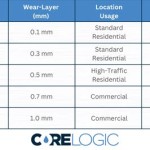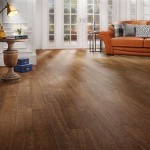How to Hide a Cord on the Floor
Exposed cords on the floor present both aesthetic and safety concerns. They can disrupt the visual harmony of a room, creating a cluttered and unorganized appearance. More importantly, they pose a significant tripping hazard, potentially leading to injuries. Effectively concealing these cords requires careful planning and the implementation of appropriate strategies. This article presents several methods for hiding cords on the floor, promoting a safer and more visually appealing living or working space.
Before embarking on any cord-hiding project, a thorough assessment of the situation is crucial. Identify the cords that need to be concealed, the distance they need to traverse, and the surrounding environment. Consider the foot traffic in the area, the existing décor, and any potential obstacles. This preliminary analysis will inform the selection of the most suitable cord-hiding solution.
The tools and materials required will vary depending on the chosen method. However, some common items that may be needed include: cord covers, cable clips, double-sided tape, scissors or a utility knife, measuring tape, and potentially paint or adhesive to match the surrounding surfaces. Gathering these materials in advance will streamline the process and ensure a more efficient execution.
Using Cord Covers and Raceway Channels
Cord covers, also known as cord protectors or cable raceways, are a popular and effective solution for concealing cords on the floor. These are typically made of plastic or rubber and come in various sizes, colors, and designs. They function by encasing the cords within a protective channel, effectively preventing them from being exposed. The selection of the appropriate cord cover depends on the number and thickness of the cords being concealed, as well as the aesthetic preferences of the user.
Cord covers are relatively easy to install. Measure the distance the cord needs to travel and cut the cord cover to the appropriate length. Open the cover and insert the cords, ensuring they are neatly arranged inside. Close the cover securely, making sure all cords are fully contained. Most cord covers come with adhesive backing, allowing them to be easily attached to the floor. For high-traffic areas, it may be advisable to use additional adhesive or fasteners to ensure the cover remains securely in place.
There are different types of cord covers available to suit various needs. Low-profile cord covers are ideal for areas with minimal foot traffic, as they have a slim design that minimizes the risk of tripping. Heavy-duty cord covers are designed for high-traffic areas, such as offices or workshops, and are capable of withstanding significant wear and tear. Corner cord covers are specifically designed for concealing cords along baseboards or walls, providing a seamless and discreet solution.
Raceway channels offer a more robust and customizable solution. These are typically made of rigid plastic or metal and are available in various sizes and configurations. Raceway channels can be mounted to the floor or wall using screws or adhesive, providing a secure and permanent solution. They are particularly well-suited for concealing multiple cords or cables, as they offer ample space and protection.
Installing raceway channels requires a bit more effort than installing cord covers. First, measure and cut the channel to the required length. Position the channel along the desired path and mark the locations for the mounting screws or adhesive. Secure the channel to the floor or wall, ensuring it is properly aligned. Insert the cords into the channel and close the cover. Raceway channels often have removable covers, allowing for easy access to the cords for maintenance or modification.
When selecting cord covers or raceway channels, consider the color and finish. Opt for a color that blends in with the surrounding floor or wall to minimize visibility. Many cord covers are paintable, allowing for further customization to match the existing décor. Choose a durable material that can withstand the expected wear and tear, particularly in high-traffic areas. Regular cleaning will help maintain the appearance of the cord covers and prevent them from becoming a dust trap.
Strategic Placement and Furniture Arrangement
In addition to using dedicated cord-hiding solutions, strategic placement of furniture and other items can effectively conceal cords on the floor. By carefully arranging furniture, it is possible to create natural barriers that obscure the cords from view. This approach can be particularly useful in living rooms or bedrooms where furniture placement is more flexible.
Positioning furniture strategically can minimize the length of cords that need to be concealed. For example, placing a lamp closer to an outlet can reduce the amount of cord that runs across the floor. Similarly, positioning a desk or entertainment center near a power source can minimize the visibility of cords connecting to electronic devices. Careful planning of the room layout can significantly reduce the need for extensive cord concealment measures.
Area rugs can be a highly effective way to hide cords on the floor. Running cords underneath a rug is a simple and cost-effective solution, providing a discreet and safe way to conceal them. Choose a rug that is thick enough to adequately conceal the cords without creating a noticeable bump. Ensure the rug is securely anchored to prevent it from shifting and exposing the cords. This method is particularly suitable for areas with low to moderate foot traffic.
Furniture with built-in cord management features can also be used to conceal cords. Some desks, entertainment centers, and even sofas are designed with integrated cord channels or compartments, allowing for easy and discreet routing of cords. These features can help keep cords organized and out of sight, contributing to a cleaner and more organized appearance. When purchasing new furniture, consider models with built-in cord management features to simplify the process of concealing cords.
Plants can also be used to strategically conceal cords, particularly in corners or along walls. Tall potted plants can effectively obscure cords running along the floor, creating a natural and visually appealing barrier. Choose plants that are appropriate for the lighting conditions in the room and ensure they are properly watered and maintained. This approach can add a touch of greenery to the room while simultaneously concealing unsightly cords.
When using furniture or other items to conceal cords, ensure that the cords are not pinched or damaged. Avoid placing heavy objects directly on top of cords, as this can cause them to fray or break. Regularly inspect the cords to ensure they are in good condition and replace any damaged cords immediately. Proper maintenance will help prevent electrical hazards and ensure the longevity of the cords.
Using Cable Clips and Ties for Organization
While cable clips and ties do not directly conceal cords, they play a crucial role in organizing and managing cords, making them less noticeable and reducing the risk of tripping. By grouping and securing cords together, they can be kept neatly bundled and out of the way. This approach is particularly useful for managing multiple cords running along the same path.
Cable clips are small plastic or metal fasteners that attach to a surface and hold cords in place. They typically come with adhesive backing, making them easy to install. Cable clips can be used to secure cords along baseboards, walls, or under desks, keeping them off the floor and out of sight. When installing cable clips, ensure they are evenly spaced to provide adequate support for the cords. Avoid overcrowding the clips, as this can damage the cords.
Cable ties, also known as zip ties, are flexible plastic straps that are used to bundle cords together. They are available in various lengths and colors, allowing for customization to match the surrounding décor. Cable ties can be used to group multiple cords running along the same path, creating a neater and more organized appearance. When using cable ties, avoid over-tightening them, as this can damage the cords. Leave a small amount of slack to allow for movement and prevent strain.
Velcro cable ties offer a reusable and adjustable alternative to plastic cable ties. These ties are made of Velcro material, allowing them to be easily opened and closed. Velcro cable ties are ideal for situations where cords need to be frequently accessed or rearranged. They are also less likely to damage the cords than plastic cable ties, as they do not exert as much pressure.
Cord organizers are designed to manage and conceal cords within a designated space, such as a desk or entertainment center. These organizers typically consist of a box or tray with multiple compartments for storing cords and power strips. Cord organizers can help keep cords neatly bundled and out of sight, reducing clutter and improving the overall appearance of the space. When using cord organizers, ensure they are properly ventilated to prevent overheating.
Labeling cords can also be helpful for organization and troubleshooting. Use label makers or adhesive labels to identify each cord, making it easier to determine which cord belongs to which device. This can save time and frustration when disconnecting or rearranging cords. Clear and concise labeling can also prevent accidental disconnection of critical devices.
By implementing these strategies for hiding and organizing cords on the floor, it is possible to create a safer and more visually appealing environment. Careful planning and the use of appropriate tools and materials are essential for achieving optimal results. Regular maintenance and inspection of cords will help prevent electrical hazards and ensure the longevity of the cords and cord-hiding solutions.

Genius Ways To Hide Wires And Cords Youtube

How To Hide Wires The Home

1 Simple Trick For Hiding Ugly Cords And Wires

Clever Ways To Conceal And Manage Lamp Cords

How To Hide Pesky Lamp Cords Hi Sugarplum

How To Hide Pesky Lamp Cords Hi Sugarplum

How To Hide Bedside Cords

How To Hide Cords And Cables In Your Home More Space Place

How To Hide Pesky Lamp Cords Hi Sugarplum

Compact Cord Protector Cover For Floor By Ut Wire







